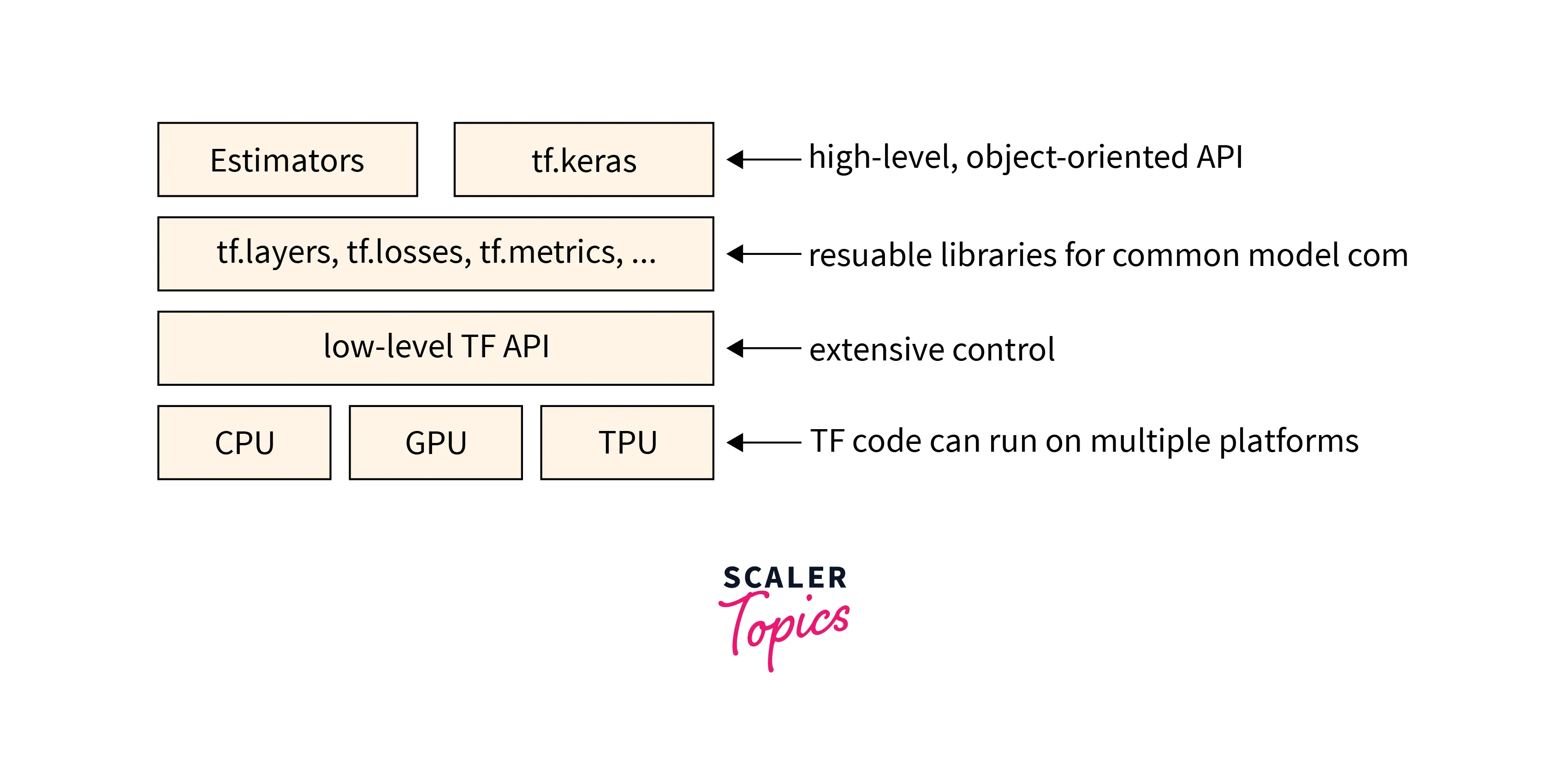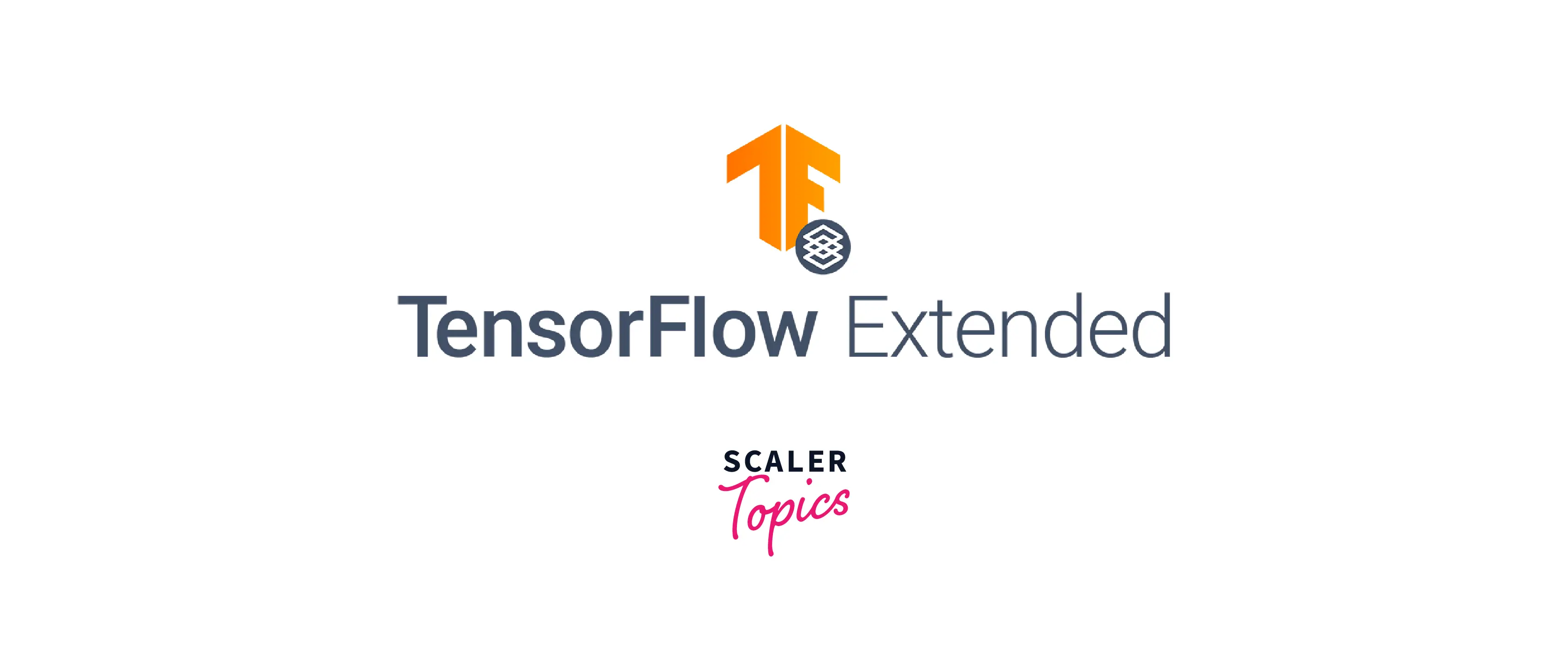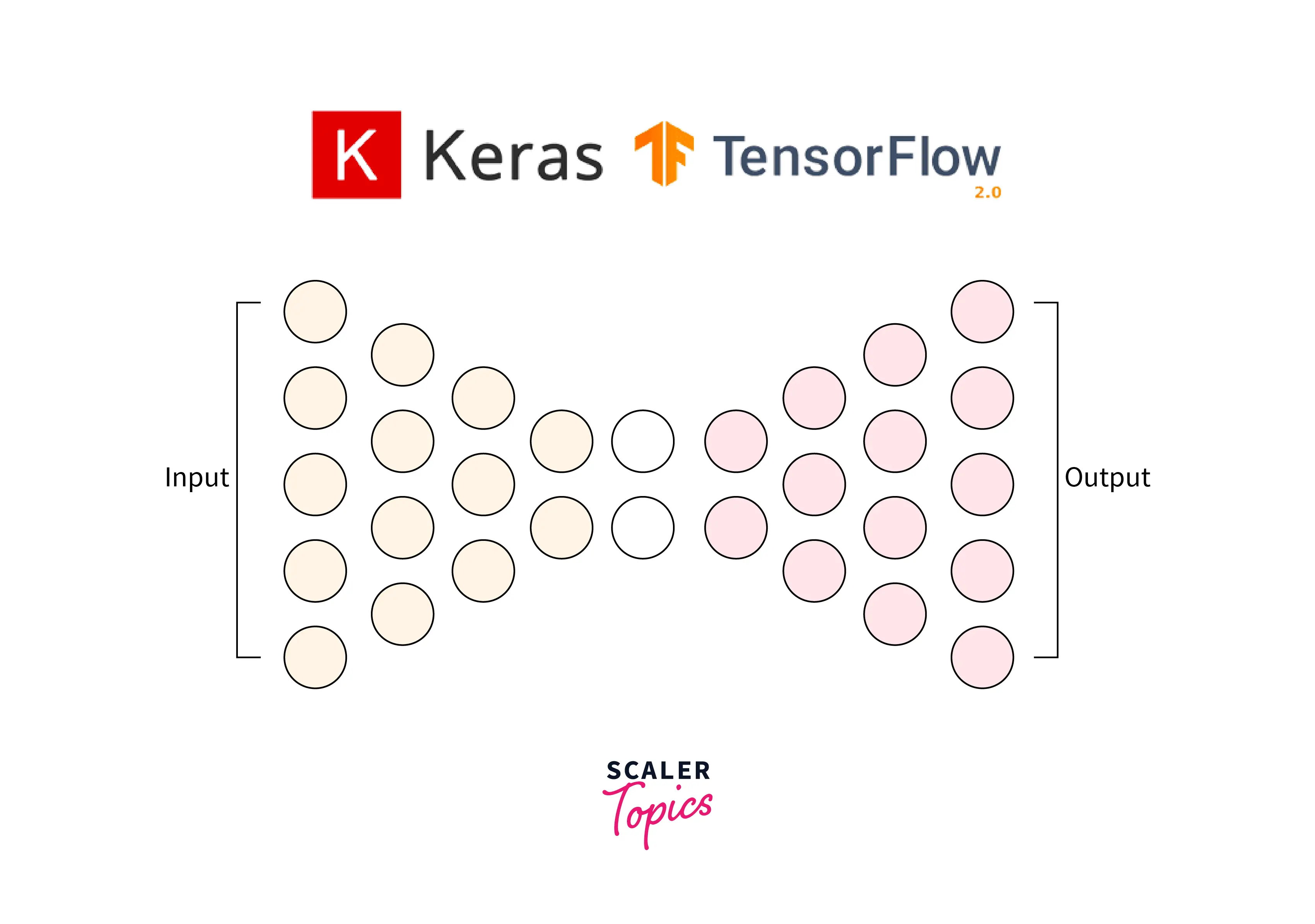Introduction to TensorFlow for Keras

Overview
TensorFlow is a popular open-source machine learning library that provides tools and libraries for building and training neural networks. Keras is a high-level deep learning library that provides a simple, user-friendly interface for creating and training deep learning models. TensorFlow for Keras integrates the Keras API into TensorFlow, which allows users to use the simple Keras API to build and train their deep learning models using TensorFlow. This integration makes it easy to combine the best of both worlds and build complex, high-performance deep-learning models.TensorFlow is a popular open-source machine learning library that provides tools and libraries for building and training neural networks. Keras is a high-level deep learning library that provides a simple, user-friendly interface for creating and training deep learning models. TensorFlow for Keras integrates the Keras API into TensorFlow, which allows users to use the simple Keras API to build and train their deep learning models using TensorFlow. This integration makes it easy to combine the best of both worlds and build complex, high-performance deep-learning models.TensorFlow is a popular open-source machine learning library that provides tools and libraries for building and training neural networks. Keras is a high-level deep learning library that provides a simple, user-friendly interface for creating and training deep learning models. TensorFlow for Keras integrates the Keras API into TensorFlow, which allows users to use the simple Keras API to build and train their deep learning models using TensorFlow. This integration makes it easy to combine the best of both worlds and build complex, high-performance deep-learning models.
What is TensorFlow?
TensorFlow is an open-source software library for machine learning developed by Google. It is used to implement and train machine learning models and can run on various platforms, including CPUs, GPUs, and TPUs. TensorFlow allows users to define and train complex models using a high-level, flexible API and provides tools for visualizing and deploying the trained models. It is widely used in research and industry for various applications, including natural language processing, computer vision, and time series analysis.

Prerequisites
TensorFlow is a powerful open-source software library developed by the Google Brain team for machine learning and deep learning. To learn and use TensorFlow, you will need to have a
- Working installation of Python on your computer.
- Additionally, it is recommended that you have some familiarity with Python and the fundamental concepts of machine learning.
- Some experience with linear algebra and calculus may also be helpful, as TensorFlow extensively uses these mathematical concepts.
Hierarchy of TensorFlow Toolkits
Core Modules
In TensorFlow, a core module is a fundamental building block of the software library. Core modules provide the basic functionality to define, manipulate, and execute machine learning models using TensorFlow. Some examples of core TensorFlow modules include the TensorFlow data API, which provides functions for loading and manipulating data sets; the TensorFlow math API, which performs mathematical operations on tensors; and the TensorFlow graph API, which provides functions for defining and executing computational graphs. These core modules are the foundation for more advanced TensorFlow functionality.
Keras

Keras is a high-level deep learning library built on top of other low-level deep learning libraries, such as TensorFlow, Theano, and CNTK. It provides a user-friendly interface for creating and training deep learning models. It was developed with a focus on enabling fast experimentation, allowing users to quickly prototype and build deep learning models without worrying about the underlying math and algorithms. Keras is written in Python and can be used on CPU and GPU devices.
TFLite

TFLite, or TensorFlow Lite, is a lightweight version of TensorFlow that is specifically designed for mobile and embedded devices. It allows developers to run machine learning models on devices with limited computational power and memory, such as smartphones and IoT devices. TFLite is designed to be fast and efficient, and it uses a special format for the model called FlatBuffers, which allows for faster loading times and lower memory usage. It also supports hardware acceleration on some devices, which can further improve performance. Overall, TFLite is useful for deploying machine learning models on resource-constrained devices.
TF Serving

TF Serving, or TensorFlow Serving, is a tool that allows users to serve machine learning models trained with TensorFlow in a production environment. It is designed to be fast and efficient and can handle large numbers of incoming requests simultaneously. In addition, with TF Serving, users can deploy their trained models as web services, which other applications or services can access over a network. This easily integrates machine learning models into a wider system or workflow. TF Serving also supports model versioning, so users can easily roll out new versions of their models without disrupting existing services.
TFX

TFX, or TensorFlow Extended, is a library of TensorFlow tools and libraries that provide a higher-level interface for building and deploying machine learning models. It includes a collection of libraries and tools that can be used to build, train, and serve machine learning models and tools for deploying and managing models in a production environment. TFX is particularly well-suited for building large-scale machine learning pipelines, and it provides support for common tasks such as data preprocessing, data validation, and model evaluation. In addition, TFX is a powerful tool for working with TensorFlow and building end-to-end machine learning systems.
TF Transforms
tf.Transform is a TensorFlow library that allows users to perform data preprocessing and transformations on large datasets. TensorFlow Extended (TFX) often uses it to build machine learning pipelines. tf.Transform allows users to define transformations that can be applied to their data in a distributed and scalable manner. This can be useful for tasks such as normalizing data, scaling values, and converting data from one format to another. tf.Transform also supports data validation, which can help ensure that the data used in a machine-learning model is high quality and conforms to certain standards. Overall, tf. Transform is a useful tool for working with large datasets and preparing data for use in machine learning models.
TFIO
tf.Transform is a TensorFlow library that allows users to perform data preprocessing and transformations on large datasets. It is often used in conjunction with TensorFlow Extended (TFX) to build machine learning pipelines. tf.Transform allows users to define transformations that can be applied to their data in a distributed and scalable manner. This can be useful for tasks such as normalizing data, scaling values, and converting data from one format to another. tf.Transform also supports data validation, which can help ensure that the data used in a machine-learning model is high quality and conforms to certain standards. Overall, tf. Transform is a useful tool for working with large datasets and preparing data for use in machine learning models.
TF Graphics
TensorFlow Graphics provides a collection of differentiable graphics layers, such as cameras and reflectance models, and 3D viewer functionalities, like 3D TensorBoard, that can be used in machine learning models. TensorFlow Graphics aims to make these graphics functions widely accessible to the community.
TensorFlow Model Optimization Toolkit (TFMOT)
The TensorFlow Model Optimization Toolkit is a library of tools for optimizing TensorFlow models for deployment. It includes tools for reducing the size and complexity of trained models, improving their performance, and making them more efficient to run on various hardware platforms. The Toolkit includes techniques such as pruning, quantization, and clustering, which can help reduce the number of parameters in a model and improve its performance. It also includes tools for analyzing and understanding a model's structure and behavior, which can help users identify opportunities for optimization. Overall, the TensorFlow Model Optimization Toolkit is useful for improving the performance and efficiency of TensorFlow models.
Training a Simple Function (y = 2x + 1) in TensorFlow with Backpropagation
To train a simple function in TensorFlow, we can use the backpropagation algorithm to adjust the model weights to minimize the error between the predicted values and the true values.
First, let's define the function we want to learn: y = 2x + 1. Then, we can create a dummy dataset for this function by sampling random values for x and using the function to compute the corresponding values for y. We can then split the dataset into train, validation, and test sets.
Next, we can define a single-layer model in TensorFlow by creating a tf. Variable to hold the model's weights and use it in a simple mathematical operation to compute the predicted values for y given a set of inputs x.
To train the model, we can use the tf.GradientTape method to calculate the gradients of the model's weights concerning the objective function, which could be mean squared error (MSE) or mean absolute error (MAE). We can then use an optimizer from tf. optimizers or tf.keras.optimizers to adjust the model's weights based on the calculated gradients.
Here is an example of how this might be implemented in TensorFlow:
Compare Keras vs. TensorFlow
Keras and TensorFlow are open-source software libraries for machine learning, but they serve different purposes and are used differently.
TensorFlow is a low-level library for defining and training machine learning models, and it provides a wide range of tools and flexibility for implementing complex algorithms and architectures. As a result, it is often used by researchers and experienced machine learning practitioners who want fine-grained control over their models and training processes.
On the other hand, Keras is a high-level API built on top of TensorFlow (and other libraries) that makes it easier to define and train machine learning models. In addition, it provides a simpler, more intuitive interface for common machine-learning tasks. As a result, it is often used by people with less experience in machine learning who want to build quickly and train models without having to dive into the details of TensorFlow.

TensorFlow is a comprehensive and flexible library for implementing and training machine learning models. At the same time, Keras is a user-friendly API built on top of TensorFlow, making it easier to build and train models quickly. However, both are widely used and have their strengths and weaknesses, so which one to use depends on the specific needs and goals of the project.
Conclusion
In. this article, we discussed many things on TensorFlow for Keras.
- We discussed what TensorFlow is.
- We understood the prerequisites of learning TensorFlow.
- We discussed the different modules of TensorFlow like Core Moudles, TF Lite, TF Serving, etc.
- We implemented a simple backpropagation using a linear function in TensorFlow.
- We also compared Keras and TensorFlow.
